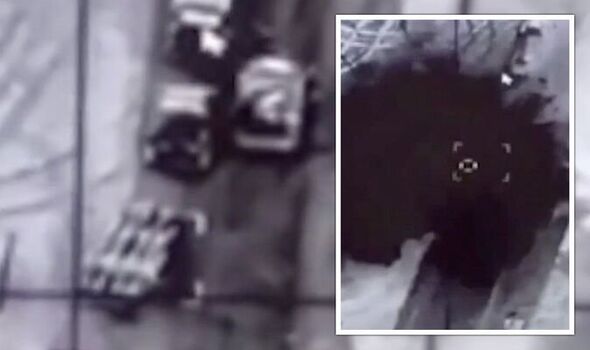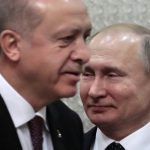What are Ukraine’s drone capabilities?
Ukraine possesses at least twelve Turkish Bayraktar TB2 drones, and reports suggest that it might have as many as thirty-six additional units. These are the same drones that Azerbaijan used effectively against Armenia in the 2020 Nagorno-Karabakh conflict.
Ukraine first purchased six of these medium-altitude, tactical uninhabited aerial vehicles (UAV) from Turkey in a $69 million deal in 2019. Each Bayraktar TB2 system consists of six aerial vehicles (or drones), two ground control stations, and related support equipment, so the initial purchase was for one complete system. The UAVs, which are Ukraine’s only armed UAV capability, have a range of up to three hundred kilometers, last up to twenty-seven hours, and can carry up to four laser-guided munitions.
At the start of the Russian invasion, Lieutenant Colonel Yuri Ignat, spokesperson for the Ukrainian Air Force, said Ukraine had approximately twenty Bayraktar drones. Baykar (the drone manufacturer), Turkey, and Ukraine have all declined to confirm the number of drones that have been delivered to Ukraine to date.

The Bayraktar TB2 initially proved itself when Turkey used them against Russian-made vehicles in Libya and Syria; it solidified this reputation in the Armenia-Azerbaijan conflict. In these conflicts, the drones successfully destroyed armored vehicles and mobile air defense systems.
How has Ukraine used these drones against Russian forces?
The first reports of Ukraine using the Bayraktar TB2s against Russian forces since the invasion came on February 27, 2022. Ukrainian General Serhiy Shaptala shared video footage on Twitter of a TB2 hitting a Russian Buk surface-to-air missile system near a town around one hundred kilometers northwest of Kyiv. Ukraine’s air force has since confirmed two drone strikes on Russian targets. Many more have been shared on social media, but they have not been verified.
Ukraine’s use of the TB2 builds on operational experience it gained last year during the conflict in the country’s east. In October 2021, Ukrainian armed forces confirmed the use of the TB2 in the Donbas region during a counter-battery mission in a separatist-controlled area. The attack was reportedly successful, despite the presence of Russian electronic warfare and air defense assets. After the attack, Moscow accused Kyiv of “provocative activity.” Ukrainian Defense Minister Oleksii Reznikov responded that Ukraine used the drone “for one tidy shot” and that, since then, enemy soldiers had not challenged the drone systems further. Prior to that point, Ukraine is understood to have been using at least a dozen TB2s in reconnaissance missions.
After the strike in Donbas, Ukraine issued a formal statement that it would “continue to increase tactics and methods of combat use of Bayraktars to deter Russian aggression and protect Ukraine’s interests.”
How vulnerable are they?
Current-generation drones such as the Bayraktar TB2 are vulnerable to air defense systems, air attacks, and electronic warfare. Bayraktar TB2s are slow, large, low-flying, and radio-controlled, making them comparatively easy targets for more sophisticated, layered air defense systems and electronic warfare capabilities. Moreover, the earlier successes of the TB2 in Nagorno-Karabakh and Libya were in part due to their use against uncamouflaged, undispersed targets and older air defense systems. Until now, there was little evidence that the Bayraktar TB2 or any current-generation drone could operate effectively against the updated, integrated air defenses that Russia possesses (though how extensively they have deployed those defenses in the invasion of Ukraine is unclear).
In addition to having prior direct (and indirect) exposure to Bayraktar TB2s, the Russian military has the capacity to identify and target them more quickly than forces previously targeted by such drones. Furthermore, Russia can use missile strikes and ground assaults to capture and destroy airfields where the UAVs operate or the ground stations used to control them. Russian state media has already asserted as much, saying Russian forces have destroyed “74 ground facilities of Ukraine’s military infrastructure,” including eleven airfields, three command points, a naval base, eighteen radar stations of S-300 and Buk-M1 missile systems, and four TB2s.
Russia has so far been unable to achieve air superiority over all of Ukraine, including its drones. Why Russia has been unable (or hesitant) to ground Ukraine’s Bayraktar TB2 force—despite having the capability, the opportunity at the start of the war, and familiarity with the UAVs—remains unclear. It is possible that Russia was surprised by the level of resistance from Ukrainian forces.
Ukraine will likely continue to deploy its Bayraktar TB2s, along with other air assets, to attack Russian tanks, other armor, and mobile anti-aircraft systems as long as it has these capabilities.
By: Lauren Kahn
Source: CRF



